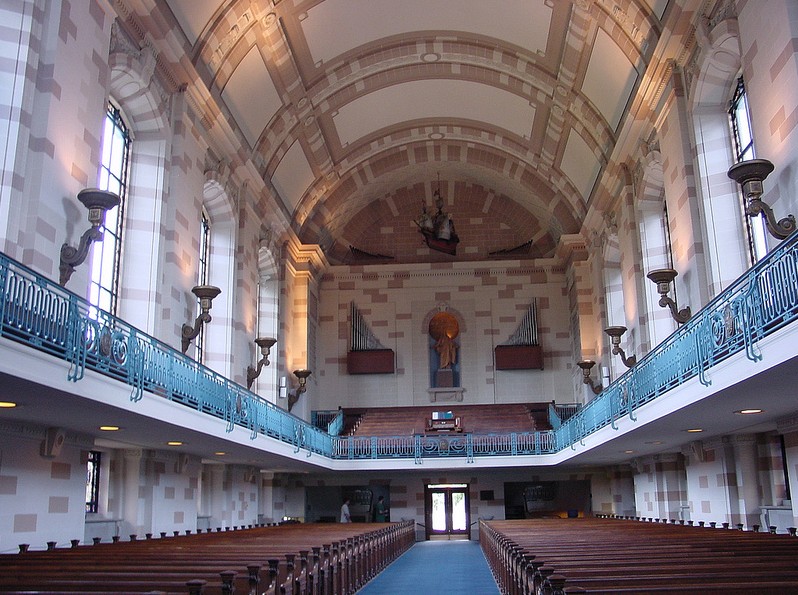
A recent post at the Naval Academy's Facebook page. From left to right the: Farragut, Mason, Porter and Sampson windows

The Chaplain's Center Web site has a "Virtual Tours" page here There are pictures and explanations of:
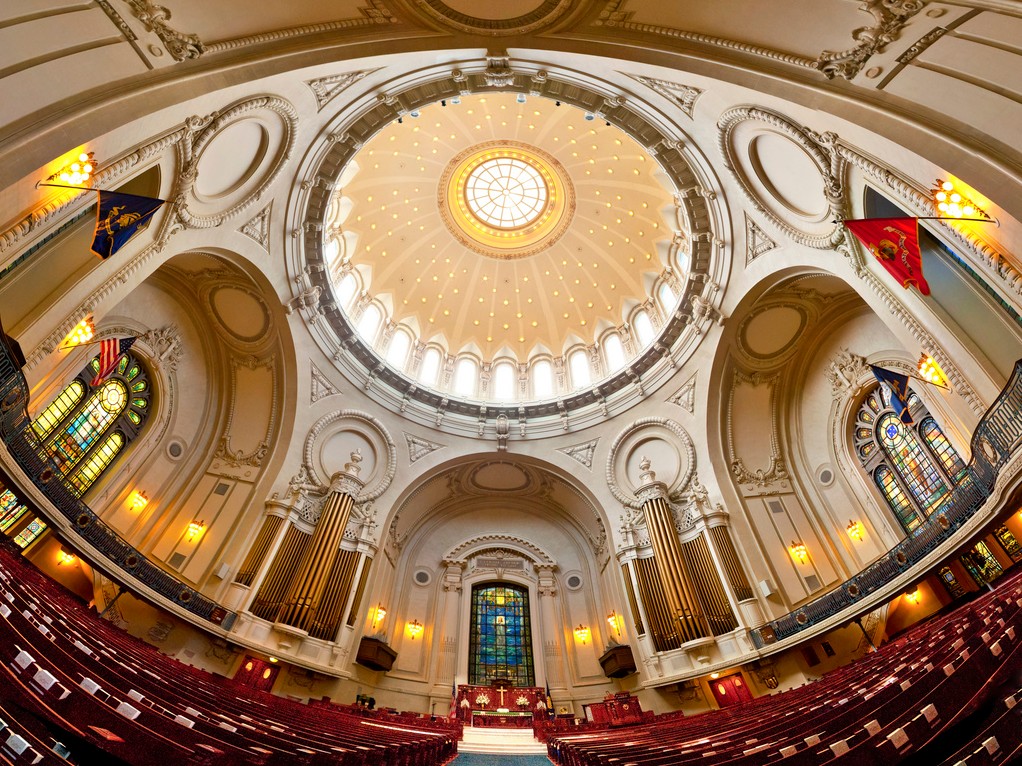
The Porter Window (below) ... As one enters the Chapel through the great bronze doors and view the distant altar, the predominating colors in the beautiful stained glass window behind it are seen to be those of the Naval Academy, blue and gold. The window (known locally as the "Porter Window") is beloved by all Chapel worshippers. It is a memorial to Admiral David Dixon Porter by the class of 1869, whose members entered the Naval Academy the same year Porter became Superintendent. It was presented in 1908. The window pictures Christ walking upon the waters within the heavenly light shining on His face. The beauty, the strength, and the serenity of the figure of Christ dominate the entire interior of the Chapel.
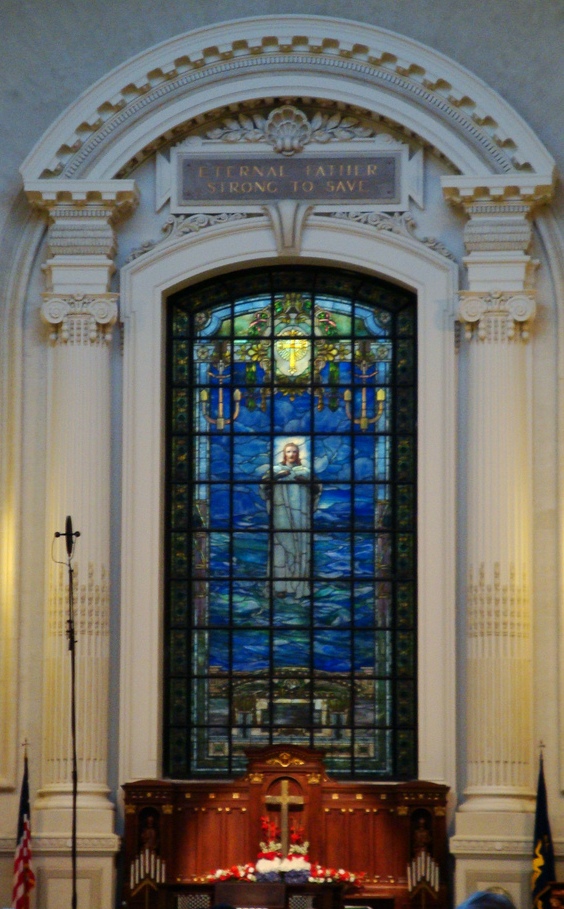

The Sampson Window (below) ... This window is a memorial to Rear Admiral William Thomas Sampson, and is directly opposite the Farragut Window. The portion of the window above the mezzanine was presented in 1909 by the officers and men of the U.S. Navy, and portrays a Winged Peace. The lower portion of the window was a gift of the U.S. Naval Institute in 1941 and shows Saint Peter and Saint Andrew mending their nets: the figure of Christ calls to them: FOLLOW ME AND I WILL MAKE YOU FISHERS OF MEN."
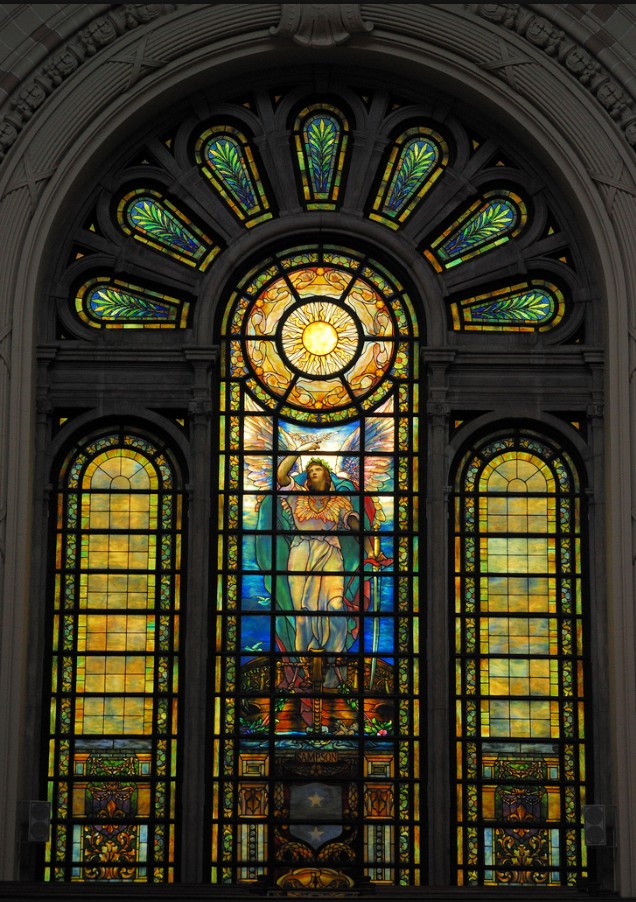

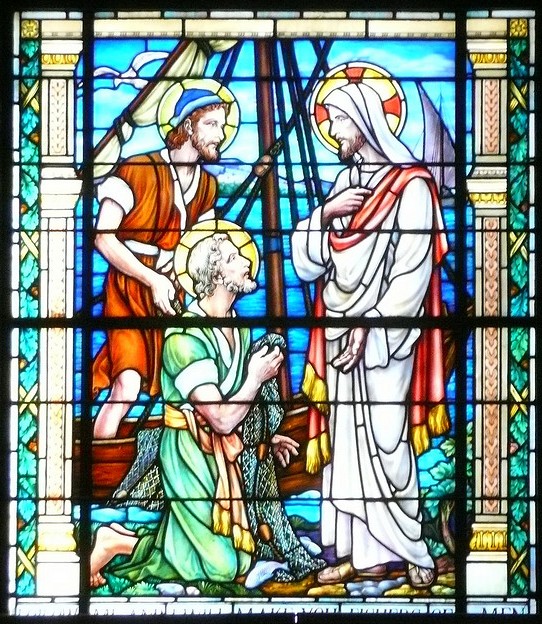
In the lower portion of the window (below the mezzanine) stands the figure of Farragut in the rigging of his flagship HARTFORD. He had gone aloft for a better view during the battle of Mobile Bay. A solicitious sailor, John H. Knowles, Quartermaster, had followed his admiral and passed lashings around him in case Farragut were to be wounded and fall. The upper part of the window show an angel guiding Farragut to victory. The rainbow is used as an emblem of hope and promise and is the keynote of the coloring of the window.
In a letter to his wife, Farragut wrote that the night before the battle he had called his staff into his cabin for prayers and had read to them from his Bible. He wrote: "I am going into Mobile Bay, as I hope He is, and in Him I place my trust."
The next day, when passing Fort Morgan in the narrow channel leading to the inner bay, and at the crucial moment, the ships ahead became confused as one of them was sunk by a mine and another stopped. Farragut silently called on God for guidance as to whether he should turn to starboard or to port in order to escape the mine field. As though in a vision, he instantly saw the way was to port. The figure of the angel symbolically points to its own left. At the top of the window is the Admiral's motto: God is My Leader."
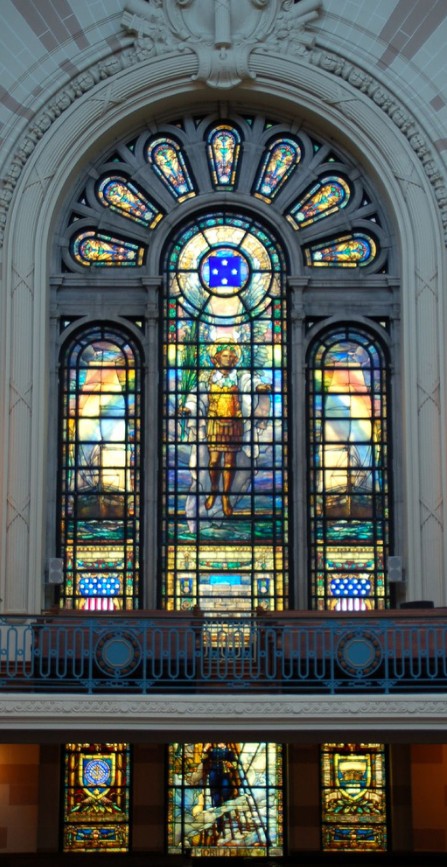
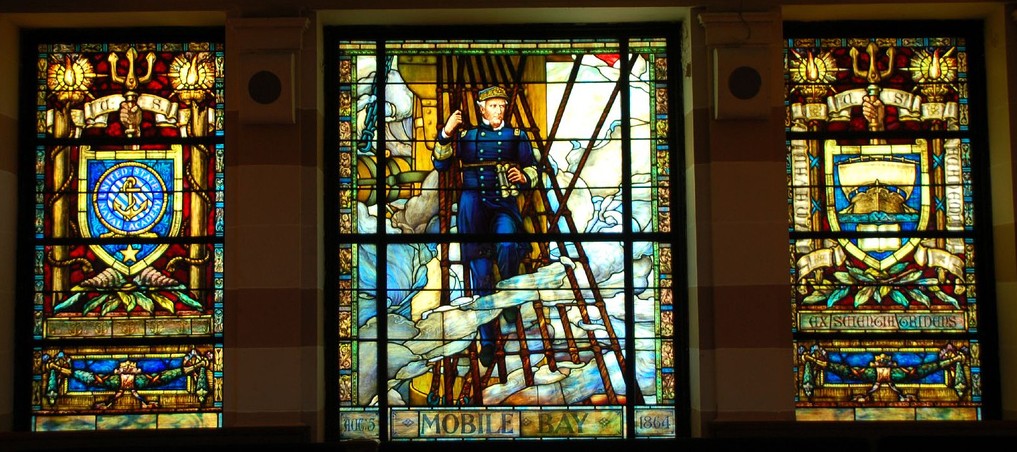

The Mason (aka Sir Galahad) Window (below) ... To the left of the Sampson Window is a memorial window presented by the family of Lieutenant Commander Theodorus Bailey Myers Mason, USN. Depicting a Christian Soldier with his unsheated sword, it was presented in 1899, first installed in the second Chapel and later moved to its present location."
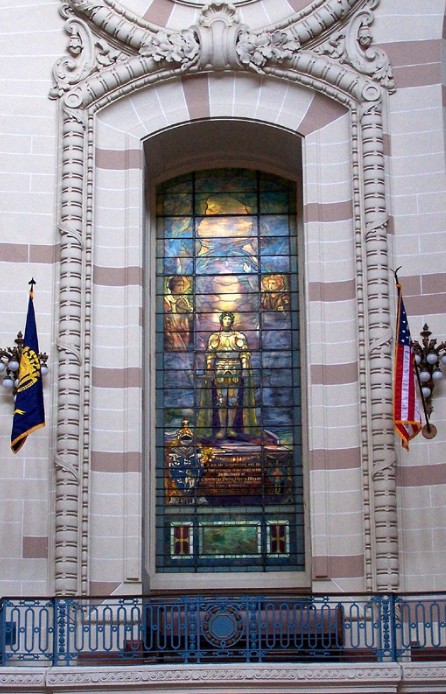
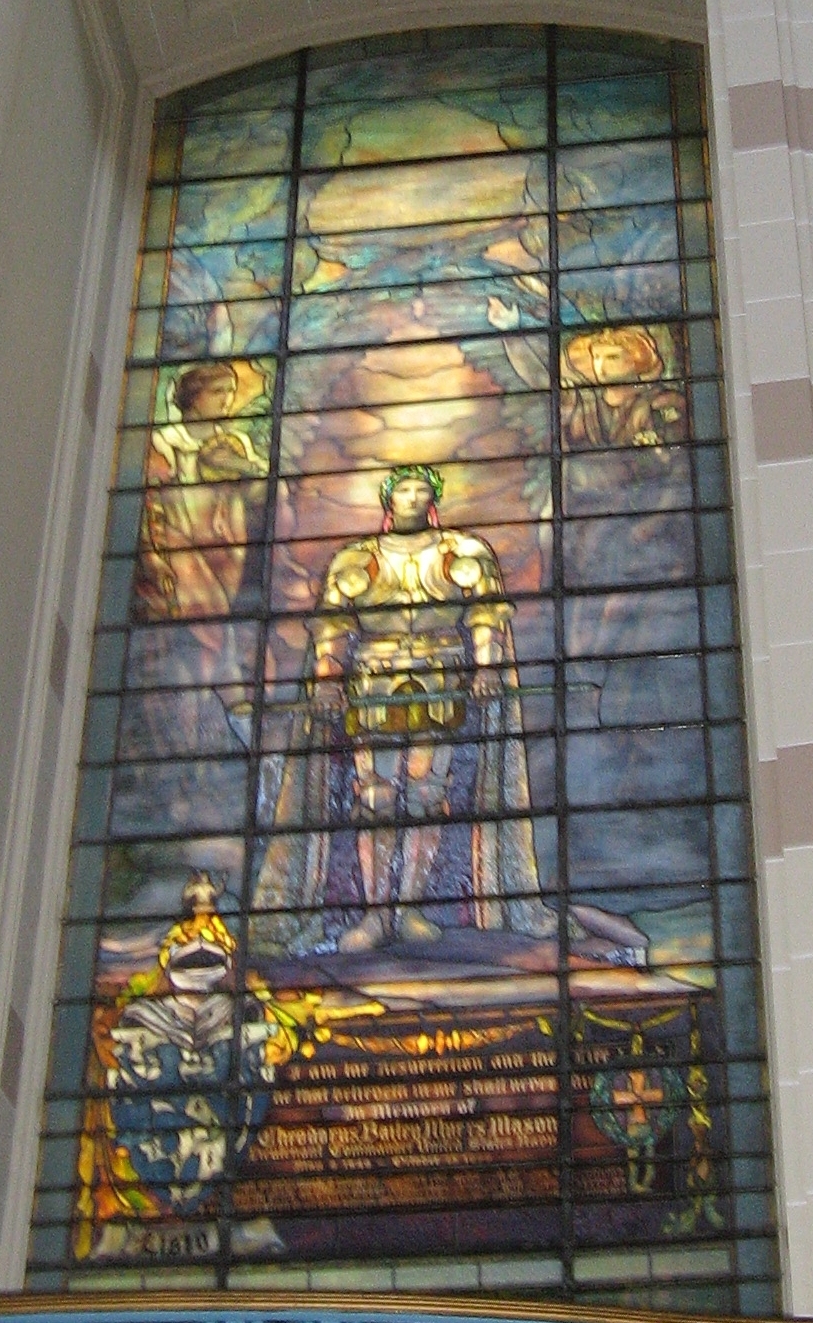
|
The Commission Invisible Window (right) ...
To the right of the Farragut Window is one whose official title
is: The Commission Invisible, The idea was conceived by the
late Chaplain Snyder K. Evans, who served the midshipmen for many
years. It depicts the recently graduated midshipman reading his
Ensign's commission shortly after the graduation ceremonies, the
only change in uniform being the replacement of the midshipman
shoulder marks by those of an Ensign. In the background can be
seen "Old Glory" flying from the top of the flagstaff in the
Academy grounds. The right hand upper corner shows the figure of
Christ. This window is to remind all future naval officers that they hold two commissions: one from God and the other from their country. The inscription at the bottom: IN REVERENT TRIBUTE TO ALL THE SONS OF THEIR ALMA MATER WHO IN WAR AND IN PEACE REALIZED HER IDEALS OF HONOR, COURAGE, LOYALTY AND DUTY, IN THE SERVICE OF GOD AND COUNTRY, THIS WINDOW IS PLACED HERE BY THE CLASS OF NINETEEN TWENTY-SEVEN.
|
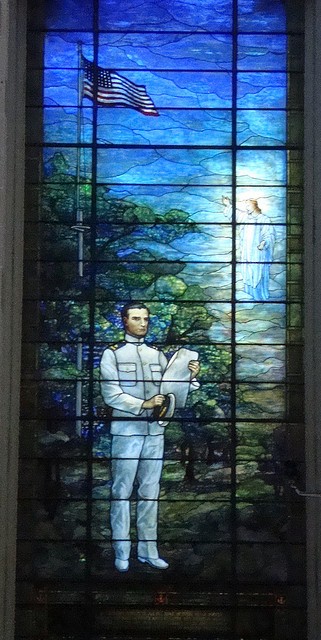
|
Windows in the "new" nave ... The theme of the eight windows in the extension of the nave (below) is significant for the divine source of inspiration and strength to all men who "go down to the sea in ships." The first four represent verses from the Old Testament. The next four are verses from the New Testament.
